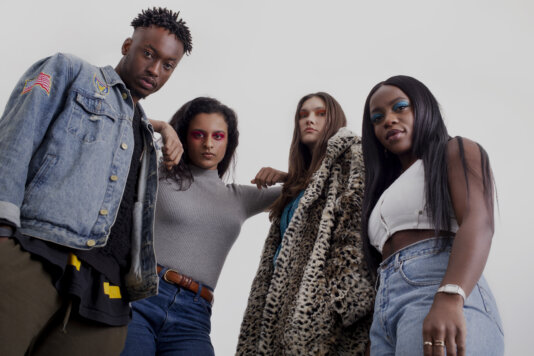- About
- Topics
- Picks
- Audio
- Story
- In-Depth
- Opinion
- News
- Donate
- Signup for our newsletterOur Editors' Best Picks.Send
Read, Debate: Engage.
A planet-first fashion industry is the consensus. However, there's still a long way to go before we understand what this would look like in reality. Colèchi is a fashion co-learning and research space on a mission to confront broken systems in fashion and create better mindsets and ways of working. One of the most urgent topics for discussion among us newcomers to the fashion world is how we can ensure we are not adding to the existing waste.
In July 2020, Colèchi collaborated with Earth Logic to host an Earth Logic workshop for our independent fashion creative community. Earth Logic is a framework to put Earth at the centre of fashion, devised by professors Kate Fletcher of the Centre for Sustainable Fashion at London College of Fashion and Mathilda Tham of Linneaus University/Goldsmiths, with over 50 years of experience within fashion and sustainability.
The session made clear that one of the most difficult adjustments is having to give up accessible items we naturally wouldn't think twice about being available.
“No more Nike.” Said one participant at the end of an in-depth conversation thinking about the cultural shifts required to establish a planet-first industry. Does a planet-first industry mean letting go of our favourite international brands? If downsizing is essential in the move towards a clean industry, how can larger brands survive? The gap between creatives and larger brands has decreased in recent years due to influencer collaborations. Initiatives like Nike's Air Max Day and the recent Nike By You initiative, which enlisted creatives to guest design a pair of trainers, is an example of the brand embracing localisation and community.
Developing from this to create an even more localised brand, what if our favourite brands became franchises. What if international brands like Nike operated like international food chains and franchised to local communities?
Take McDonald’s for example, which in 2018 had a total of 93 per cent franchised restaurants. On its website, McDonalds states that “the power of [their] franchisees is suppliers and employees working together towards a common goal.” In the U.S., nearly 90 per cent of restaurants are operated by independent, small, and mid-sized businessmen and women. The most attractive feature of franchises is that they encourage community. The beauty of a fast-food chain with this model is that it can be available anywhere in the world but is tailored to that specific location.
What can fashion take from this?
The most radical shift in our current practices is localisation. There is a large disconnect from the origins of the garment and the person who will eventually own it. Fashion Revolution’s Who Made My Clothes campaign highlights this perfectly. Pushing people to ask where their clothes come from displays the lack of transparency and awareness society has about the clothes we buy.
So what if fashion brands were to adopt a franchise model where small and independent businessmen and women could take control of some of the most famous brands? If large-scale labels were franchised, local communities would be able to insert their own stories, narratives, and cultures authentically into the brand.
Although this idea proposes adopting the franchise model, it will also require adjustments in what it means to be a franchise. Within a creative industry, more freedom would be required. However, when imagining this planet-first industry that abandons overproduction and encourages localisation, large brands can still exist in ways that give control to the people.
Tina Wetshi is Cultural Strategist and Creative Director with a BA in History and Politics and a Masters in Culture, Criticism and Curation from Central Saint Martins. She is a co-founder at Colèchi, a co-learning and research space for independent fashion creatives and is interested in the intersections of fashion and politics with a focus on working-class communities. She has worked in press and PR for a selection of fashion brands.
Image: Colèchi
